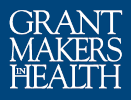HIV/AIDS and Women of Color: Changing the Conversation
For the past decade, HIV/AIDS-related conditions have been the leading cause of death for African-American women ages 25-34 in the United States (CDC 1999). Over the past two decades, our local foundation has seen this national epidemic take root in our local community in Washington, DC, where we now have 10 times the rate of HIV/AIDS per capita compared to the rest of the country.
Changing the Conversation: Taking a Social Determinants of Health Approach to Addressing HIV/AIDS among Women of Color
This piece was written in conjunction with an October 1, 2009 GIH strategy session to understand HIV/AIDS prevention among women of color through a social determinants lens and explore the possibilities this approach presents.
We Must Promote Health Equity in Spite of Current Economic Challenges
When the Whitehall Studies were first published, they identified not only a social gradient that correlated the relationship between social status and life expectancy, but new variables to consider when predicting population health outcomes. These variables included the economic, social, and physical environments in which people live.
It’s Not Just Black and White: Health Disparities in Other Racial and Ethnic Groups
Though discussions of race often center on the experiences of African Americans, other racial and ethnic groups, such as Hispanics, Asian Americans, and American Indians, have also experienced systematic racism and disparities in health status and health outcomes.
Seeing the Future with 20/20 Vision: Michael Marmot Plenary Address from the 2009 GIH Annual Meeting
Read the 2009 annual meeting plenary address “Building a Global Movement for Health Equity” by Michael, Marmot, Chair of the Commission on Social Determinants on Health, World Health Organization.
Initiatives in Education, Economic Development Present Challenges, Yield Big Rewards
The Rapides Foundation is a health care legacy dating back to 1994. The foundation’s grantmaking focus has always addressed traditional health care and health promotion priorities. We have funded medical training and programs that help people get access to medication and launched programs that helped communities fund walking trails and playgrounds.
Expanding the Circle of Allies
Many of us have been investigating and working to reduce health disparities for decades. And we have seen the trend lines like writing on the wall. An equation of the health decisions we each make, plus the environment in which we make them, has added up to a nation where we are not nearly as healthy as we could be.
Seeing the Future with 20/20 Vision
The resource portfolio from GIH’s 2009 annual meeting Seeing the Future with 20/20 Vision features six essays.
Social Policy Is Health Policy
Decades of research and practical experience in the United States and other countries have shown that a number of economic and social factors – education, income, occupation, wealth, housing, neighborhood environment, race and ethnicity – have a powerful influence on health. This link between social position and health status is predictable, persistent, problematic, and – we hope – preventable.
Cultivating Health Literacy at the State and National Levels
In 2004 the Institute of Medicine (IOM) released a landmark report on the state of health literacy in the United States. That report, Health Literacy: A Prescription to End Confusion, pulled together a growing body of information indicating that health literacy deficits are both common – present in nearly half of the U.S. population – and damaging to individual health and well-being.
Newsletter Sign Up
Want to sign up for the GIH Bulletin? Click here to get on the list.
Contribute to the GIH Bulletin and Blog
If you are interested in contributing your story or expertise to the GIH community please review our Editorial Submission Guidelines.
